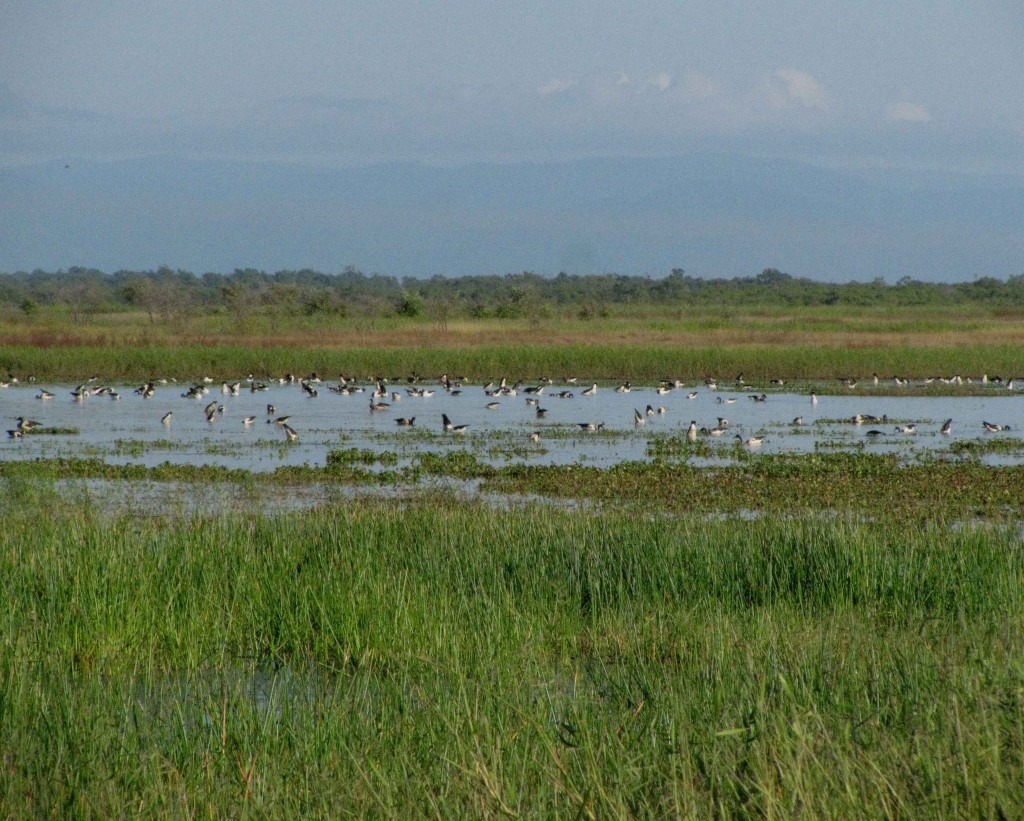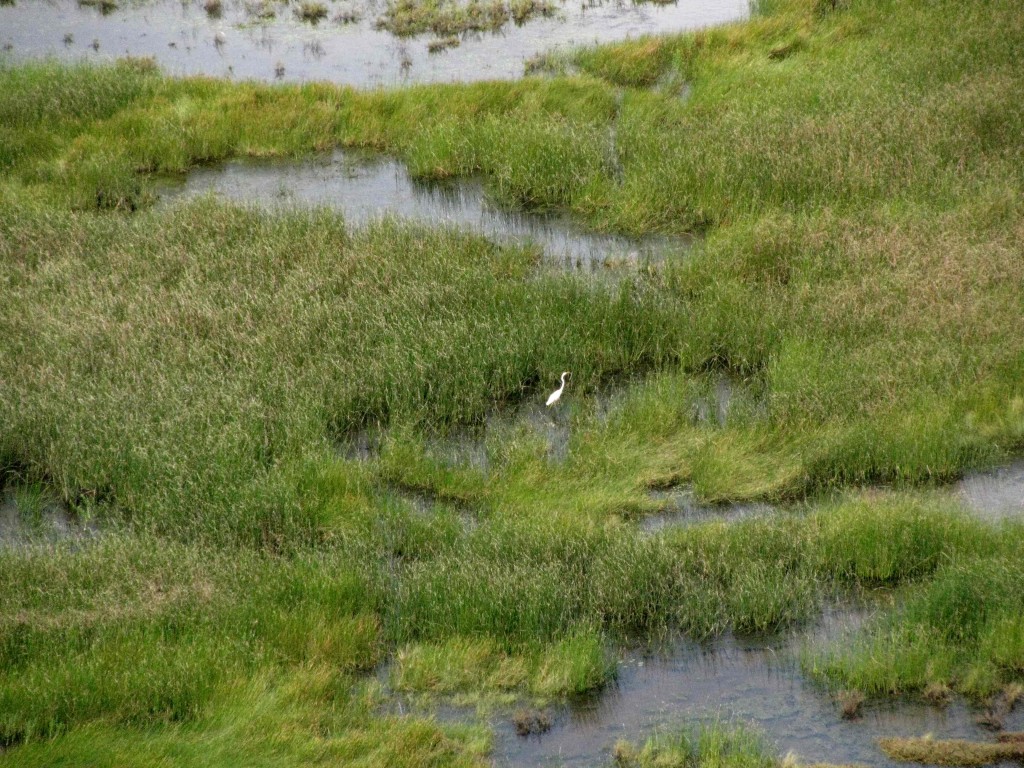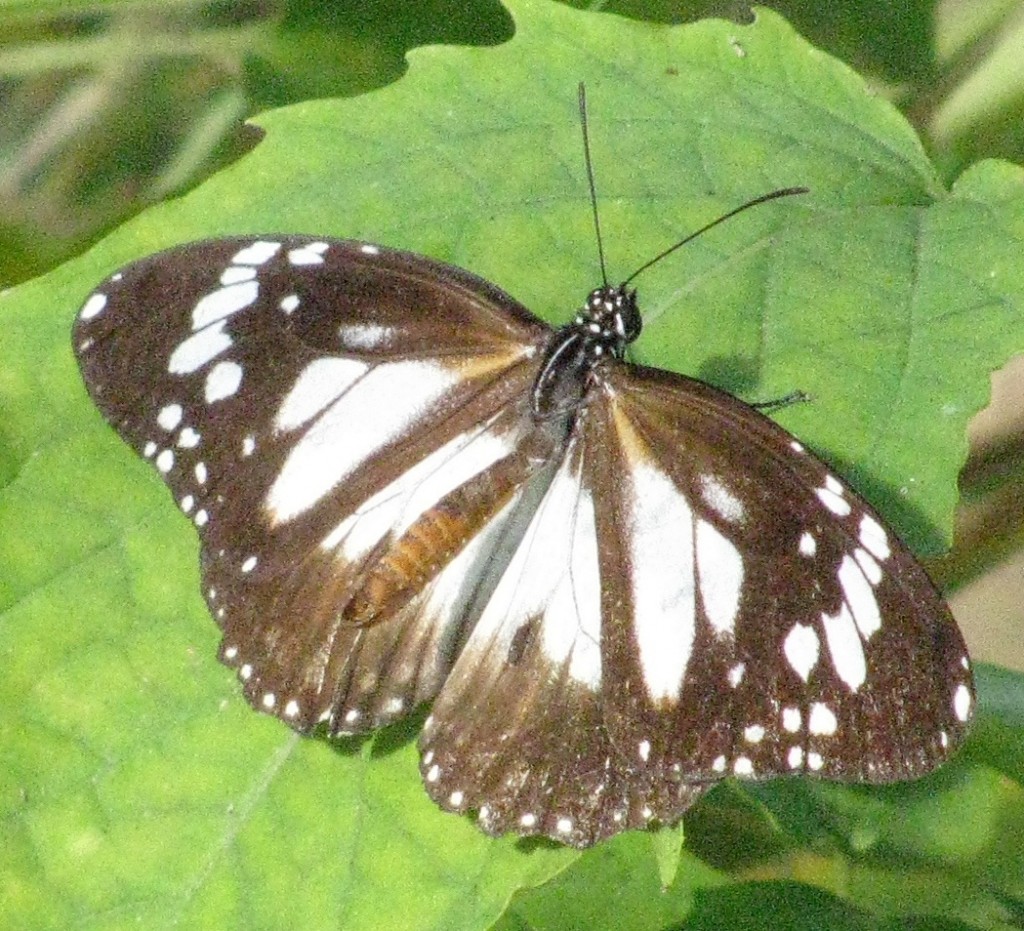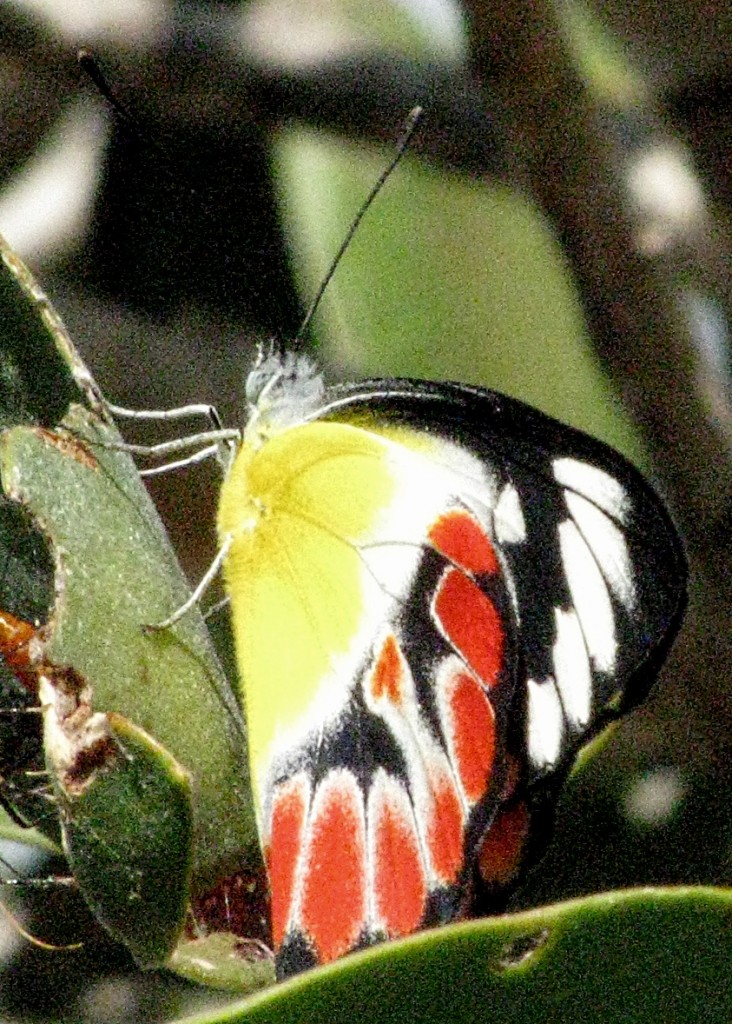This morning, while Vilis and Janis cycled the rough overgrown track along the base of the Many Peaks Range, I quickly checked out the Townsville Town Common Conservation Park wetlands, forest, and freshwater marshes from an observation tower, roadside viewing points, and a trio of birdhides. I spent only short amounts of time at each, but was rewarded by sightings of a forest kingfisher with rich, deep-blue plumage, rainbow bee-eaters burnished by the sun into gleaming copper and emerald, and a bar-shouldered dove cooing from a dead tree branch, the morning light warming its grey throat and chestnut, black-barred nape and shoulders.
In the wetlands, magpie geese rested on grassy mounds and dabbled in shallow, widespread pools. Near them, a pair of black swans floated serenely on sunlit, still water, and two snakebirds or anhingas held their black wings out to dry, their bodies and limbs all elegant curves and angles, as though they were dancers frozen in time. Australasian grebes and little black cormorants patrolled the water surface, ducking underwater in quick diving forays for food. In the distance, great egrets reared up as tall, deadly grace against the backdrop of green and water, and masked lapwings paraded on a far shore.

Magpie Geese on the Townsville Town Common (© Magi Nams)

Great Egret in the Common (© Vilis Nams)
Spreading out before me, the expansive Common wetland occupying the Bohle River floodplain was comprised of curtains of sedges and grasses reflected in sheets of shallow water. Water lilies pushed purple and white blossoms into the air above the wetland surface, huge dragonflies zipped over the sedge beds, and the heads and necks of magpie geese periodically appeared out of long grasses near shore.
A magnet for waterbirds, the Common also attracted other wildlife. Four agile wallabies hopped across the long access road through the wetland to the Bald Rock carpark. A snake slithered across the road, and another disappeared into the vegetation bordering the Jacana Birdhide track. Tracks of feral pigs and dingoes decorated the drying sandflats near Bald Rock, and butterflies – varied eggfly, yellow albatross, scarlet jezebel, blue tiger, swamp tiger, grass yellow, and lesser wanderer – winged erratically over wildflower-rich meadows bordering the sandplains.

Male Swamp Tiger (© Magi Nams)

Female Lesser Wanderer (© Magi Nams)

Male Scarlet Jezebel (© Magi Nams)
Nourished by the Wet, the Common still looked lush, although the water flooding the sandplains had retreated significantly since Vilis and I drove to Bald Rock to hike the Many Peaks Range a month ago (see http://maginams.ca//2010/04/03/).
The Common, which cycles through three phases during the year – Pre-wet, Wet, and Post-wet – is now in its Post-wet phase, which typically lasts from early April through August. Lush supplies of vegetation will be available to birds, wallabies, and other wildlife from April through June, but come July to September, the dry aspect of this dry tropics region will set in in earnest, turning the green grasses and sedges to grey, standing dead. The Pre-wet phase of the cycle runs from October through to late December, with thunderstorms building throughout November and December in preparation for the Wet. Finally, as the skies typically open in late December, rain will pound down onto Townsville and the Common, flooding the dried sandplains once more.1
Encouraged by my discoveries in the varied habitats of the Common – wetland, forest, freshwater marsh, open meadow – I drove to meet Vilis and Janis, knowing I’ll return.
Today’s birds: Australian white ibises, magpie geese, black swans, Australasian grebes, little black cormorants, *forest kingfisher, sacred kingfisher, snakebirds or anhingas, *wandering whistling ducks, Brahminy kite, *leaden flycatcher, great egrets, masked lapwings, red-tailed black-cockatoos, rainbow bee-eaters, golden-headed cisticolas, *bar-shouldered dove, *little shrike-thrush. (* denotes lifelist sighting)
Reference:
1. Queensland Government, Environment and Resource Management. Townsville Town Common Conservation Park: Nature, culture and history. Updated 08-Dec-2008. Accessed 17-May-2010. http://www.derm.qld.gov.au/parks/townsville/culture.html


